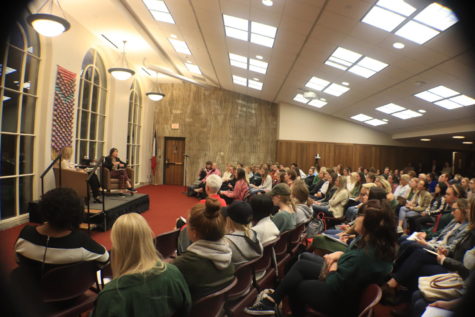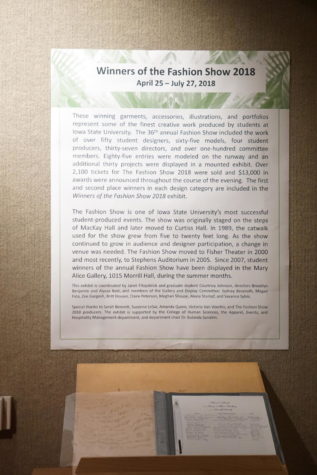Social media, fitness trends
October 29, 2014
When students are bored in class, it’s usually the first thing they turn to. It’s also the first place turned to if something out of the ordinary happens on campus. According to Huffington Post, this same thing has overtaken porn as the No. 1 activity on the web. So, what is it? You guessed it. It’s social media.
As the usage of social media becomes more prevalent, so do all the different opportunities. Not only has networking become an integral part of using social media, but tracking fitness is also rising.
Apps such as Nike+ Running, Endomondo, MapMyRide and RunKeeper allow users to connect their goals and progress to social media sites such as Facebook.
Jackie Holtz, junior in biological systems engineering and runner in the 2014 IMT Des Moines Marathon, has been using the app Nike+ Running for about three to four years now.
“I like the app because it tells me how long I’ve been running, approximately how many calories I’m burning as well as my pace at each mile,” Holtz said.
She said she posts her progress to Facebook because she’s proud of how much she can run, and getting encouragement from friends and family makes her more motivated to keep going.
However, why are these apps starting to become popular? What’s the reasoning behind why people choose to share their fitness progress and goals online other than for motivation?
“There’s a cognitive behavioral technique called contingency contracting,” said Leigh Phillips, assistant professor in the psychology department and specialist in health-related behavior. “It’s a way of getting yourself engaged in a behavior because if you don’t, it’s embarrassing, or something bad happens… It might be if I don’t do this, then I’m going to have to post it on social media and embarrass myself. Or, it could be positive where it’s kind of a reward. People are telling others that they were able to do this.”
According to a research study conducted by Pew Research Center, social media usage over all Internet users has increased from 8 percent to 73 percent from 2005 to the end of 2013, with the highest percentage being those ages 18 to 29.
“As it expanded, its [original] uptake was fueled by people wanting connection, and I think that’s what we face… We’re all very busy,” said Rey Junco, associate professor in the School of Education who is a national expert on social media. “It’s difficult to connect with people generally on a day-to-day basis, and social media sites and services help people to do that on a daily basis.”
Phillips also agreed that social media helps connect people who are not physically in the same location, but that’s not the only benefit. Like Holtz had mentioned, motivation from others also plays an important role.
“People are motivated by what others are doing, what their peers are doing, what they perceive their peers to be doing,” Phillips said. “One’s peers or family members could be the reason why someone starts exercising in the first place.”
However, with this fitness progress trend and social media taking off so much, it’s hard to tell what the future holds.
“Because people are using social media so much, and there are so many researchers looking at apps related to physical activity and getting people to be more social and more active, I think it certainly has a long way to go,” Phillips said. “But, I can’t anticipate what that will be.”
















